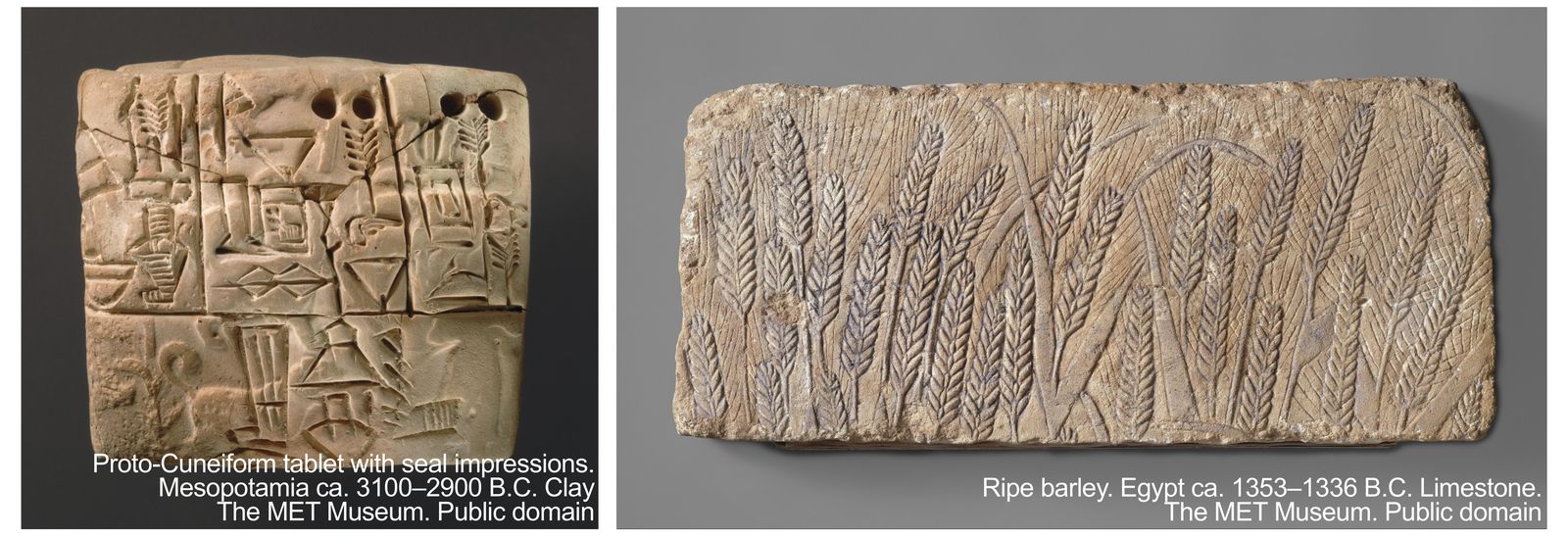Why research on barley can improve not only our beer
Barley is well known as a source of animal feed and as a raw ingredient in processed foods, but maybe its most popular use is in beer. Barley is one of the 10 most import crops in production and value, and Europe is one of the main producers worldwide. Historically, barley was an important grain source for human consumption. It is believed that barley was the first domesticated crop, around 11000 years ago. In comparison, maize domestication occurred 10000 years ago. Nowadays, you can find beautiful barley ears carved in stone from 3000 years ago in Egypt or Sumerian proto-cuneiform clay tablets documenting barley distribution in Mesopotamia, just to highlight how long barley has been of economic importance and cultural relevance for humanity.
In recent years, barley is gaining force as a biological model for cereal crops. That makes sense if we consider that barley is closely related to wheat. They can even be crossed to generate fertile progeny, which only happens in crosses between individuals from the same species or very closely related ones. And in fact, many cereal crops share certain features: if we look early in their development, they look quite similar. But how do the maize ears or the barley spikes in the mature plants come to look so different from one another?
The ears in cereal crops are a flower bouquet or inflorescence, and its origin in all terrestrial plants is “the meristem”. Meristems are groups of cells that divide to provide cells to form new organs. If you look carefully after removing the leaves in the shoot tip of any seedling, you will be able to see in the center exactly where all the leaves are coming from. In contrast with animals, where the organs are pre-established during the embryonic phase, plants have the capacity to form new organs throughout their lives thanks to the meristems. The rate of cell division and the decision when and where to make a new organ (leaf, branch, flower) made in this group determine the plant morphology. In general, the meristems are tightly regulated, and growth conditions can affect the final shape, or “architecture”, of the plant. However, if we look closely at the morphology of grasses (as maize, oats, rye, barley, rice, wheat) grown under “normal” conditions, we nevertheless have a diverse pattern of flower arrangements as a result of the decisions made in the meristem. Understanding how this variation in patterns is controlled by plant regulatory networks will give us the basis to modify plant architecture in the pursuit of higher grain yields.
Barley could provide the key to understanding plant and inflorescence variation in cereal crops since different traits were being selected for during domestication compared to, for example, maize. One which is obvious is the branches: in maize, this trait was counter selected to obtain the main stalk to hold the cobs, whereas in barley and wheat the branching is desirable to increase the number of culms having spikes. On the other hand, the spike holds around 60 grains, and the corn cob bears around 500 seeds. Fortunately, the molecular techniques to study these processes are being developed in barley, a biological model with simpler growth conditions and reduced genome complexity compared to maize and wheat.
In CEPLAS we are interested in identifying key regulators controlling spike development in barley. Understanding this will allow us to fine-tune the developmental decisions that would lead to increased grain yield. Besides this, the knowledge obtained using barley as a model can answer intriguing biological questions, for example how the grass inflorescence architecture is shaped by the meristems.
The English version of this text was proofread by Vicky Howe.
Planter’s Punch
Under the heading Planter’s Punch we present each month one special aspect of the CEPLAS research programme. All contributions are prepared by our early career researchers.

About the author
Edgar Demesa-Arevalo is postdoctoral researcher in the groups of Prof. Rüdiger Simon and Prof. Maria von Korff Schmising at the Institutes for Developmental genetics and Plant genetics respectively at the Heinrich Heine University Düsseldorf. His research focuses on understanding the molecular basis of inflorescence development in barley. He earned his PhD at CINVESTAV-Irapuato in Mexico, studying the signaling during gametophyte establishment in Arabidopsis. Before he joined CEPLAS, he researched inflorescence meristem development in maize, at Cold Spring Harbor Laboratory in USA.


